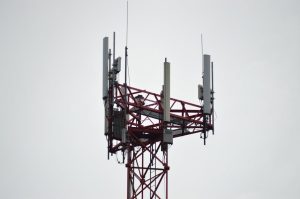Mapping the Fiber Landscape: Key Players and Projects Across Africa
The African continent is witnessing a significant expansion of its fiber optic network, with numerous key players and projects driving this growth. This article provides an in-depth look at the current state of fiber optics in Africa, highlighting the major players, projects, and initiatives shaping the continent’s connectivity landscape.

Mapping the Fiber Landscape: Key Players and Projects Across Africa
Mapping the Fiber Landscape: Key Players and Projects Across Africa. The African continent is undergoing a significant transformation in its telecommunications landscape, driven by the rapid expansion of fiber optic networks. This growth is being fueled by a combination of government initiatives, private investment, and international cooperation, with the goal of bridging the digital divide and promoting economic development. In this article, we will delve into the world of fiber optics in Africa, exploring the key players, projects, and initiatives that are shaping the continent’s connectivity landscape.
The importance of fiber optics in Africa cannot be overstated. With many countries on the continent still relying on traditional copper-based networks, the shift to fiber optic technology is expected to have a profound impact on the quality and reliability of internet services. Fiber optic networks offer faster data transmission rates, greater bandwidth, and improved network resilience, making them an essential component of modern telecommunications infrastructure. As a result, governments, telecom operators, and private investors are investing heavily in the development of fiber optic networks across Africa.
Key Players in the African Fiber Optic Market
Several key players are driving the growth of the fiber optic market in Africa. These include major telecom operators such as MTN, Vodacom, and Orange, which are investing heavily in the development of their fiber optic networks. Other important players include fiber optic specialists such as Liquid Telecom, SEACOM, and Main One, which are building and operating large-scale fiber optic networks across the continent. International organizations such as the African Development Bank and the World Bank are also playing a crucial role in supporting the development of fiber optic infrastructure in Africa.
In addition to these major players, a number of smaller, regional operators are also making significant contributions to the growth of the fiber optic market in Africa. These operators are often focused on specific countries or regions, and are working to build out fiber optic networks in areas that are currently underserved. Examples of these regional operators include Ghana’s National Communications Authority and Kenya’s Jamii Telecom, which are both working to develop fiber optic networks in their respective countries.
Major Fiber Optic Projects in Africa
There are numerous major fiber optic projects currently underway in Africa, each with the potential to significantly impact the continent’s connectivity landscape. One of the most ambitious projects is the African Continental Backbone, a massive fiber optic network that aims to connect all 55 countries on the continent. The project is being led by the African Union, in partnership with the African Development Bank and other international organizations.
Another significant project is the East African Submarine Cable System, which will connect countries in East Africa to the global internet backbone. The project is being developed by a consortium of telecom operators, including MTN, Vodacom, and Orange, and is expected to significantly improve internet speeds and reliability in the region. Other notable projects include the West African Cable System, which connects countries in West Africa to Europe and Asia, and the SEACOM fiber optic network, which spans over 17,000 kilometers and connects many countries in Eastern and Southern Africa.
Challenges and Opportunities in the African Fiber Optic Market
Despite the many opportunities presented by the growth of the fiber optic market in Africa, there are also a number of challenges that must be addressed. One of the main challenges is the high cost of building and maintaining fiber optic networks, particularly in rural and remote areas. This can make it difficult for operators to achieve a return on investment, and may limit the availability of fiber optic services in certain regions.
Another challenge is the lack of regulatory frameworks and policies to support the development of fiber optic infrastructure in Africa. In some countries, regulatory uncertainty and bureaucracy can create significant barriers to investment, making it difficult for operators to build and operate fiber optic networks. Additionally, the lack of skills and expertise in fiber optic technology can also hinder the development of the market, particularly in countries with limited experience in this area.
However, these challenges also present opportunities for innovation and growth. The development of new technologies, such as fiber-to-the-home and 5G networks, is expected to drive demand for fiber optic services and create new opportunities for operators and investors. Additionally, the growth of the fiber optic market in Africa is also expected to have a positive impact on the continent’s economic development, by improving access to information and communication technologies and promoting the growth of e-commerce and other digital industries.




